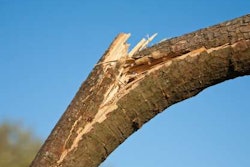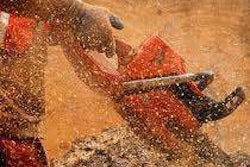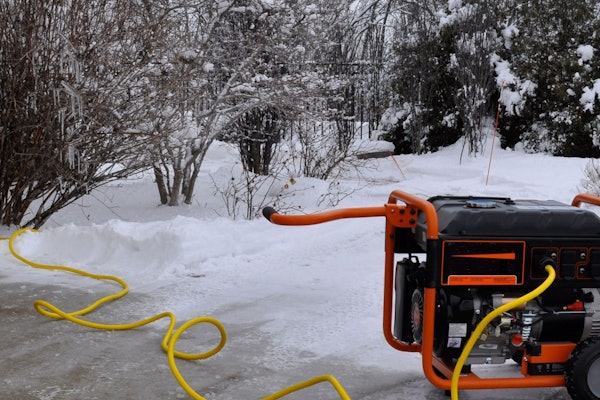“There is no single way to prepare a site,” says Bryan Zent, marketing manager for Bobcat. Each site is unique and may require different tasks, or tasks conducted in a different order.”
Zent cautions that before starting the first engine, surveying, soil testing, planning and permitting should all take place. Beyond those, there are several things to consider when adding site preparation services to your landscaping business.
Site cleanup
Zent says that contractors must take steps to prevent erosion and protect water supplies. Often a silt fence erected as a temporary barrier to control sediment transport can handle this.
If the site needs to be cleared of natural vegetation and sprayed to prevent re-growth, the WetBlade from Diamond Mowers is an all-in-one option to consider. Danny East of Diamond Mowers says the WetBlade is an efficient way to tackle brush clearing because the attachment cuts vegetation, then applies chemical to the cut to prevent re-growth. One benefit is that it can be used in inclement weather and in school and residential areas. East says everything stays under the deck, ensuring no spray drifts into the air or water.
Additionally, chemicals can come mixed on palettes, eliminating that step for landscapers.
Other attachments, such as an industrial grapple, root grapple, utility fork grapple or combination bucket may be used to remove objects such as trees, roots and rocks. Zent also says that attachments like an angle broom or sweeper with a water kit can be used to control dirt and dust around the site during cleanup.
Tree removal
Once brush and other debris are cleared away, trees and stumps can be tackled. While large trees can be removed with chainsaws, Zent recommends a forestry cutter attachment. “It turns trees into mulch, which can be returned to the soil, improving the soil while eliminating the need to haul off debris,” he says. Small trees with a diameter up to three inches can be removed and turned to mulch with a rotary cutter or flail cutter attachment.
Stump grinders are the easiest and least intrusive method to remove stumps once trees are down. The alternative – pulling stumps using a tractor and chain – causes the underground root system to tear up the soil and grass around the stump, says Jim Cornelius, president of US Praxis.
When approaching a stump, Cornelius says it is imperative to ensure the area is free of rocks and other projectiles that could hurt people or damage property. Then, take a chainsaw and cut the stump as low to the grade as possible. This saves time and extends the life of the grinder blade.
Cornelius says a stump three feet in diameter can be removed to four inches below grade in less than 20 minutes.
Grading
Rough grading can be done using a bucket or dozer blade attachment. A scarifier on a loader or ripper on a mini-excavator can break up hard-packed or rocky soil, Zent says. The same attachments can be used in final grading, but Zent says attachments like a box scraper, grader or landplane work well if more precise control is desired.
For landscapers looking to add site preparation to their portfolio or facing a site needing special equipment, renting is a great option, Zent says. Additionally, he advises landscapers to try and plan around existing elements, like mature trees and water features.









